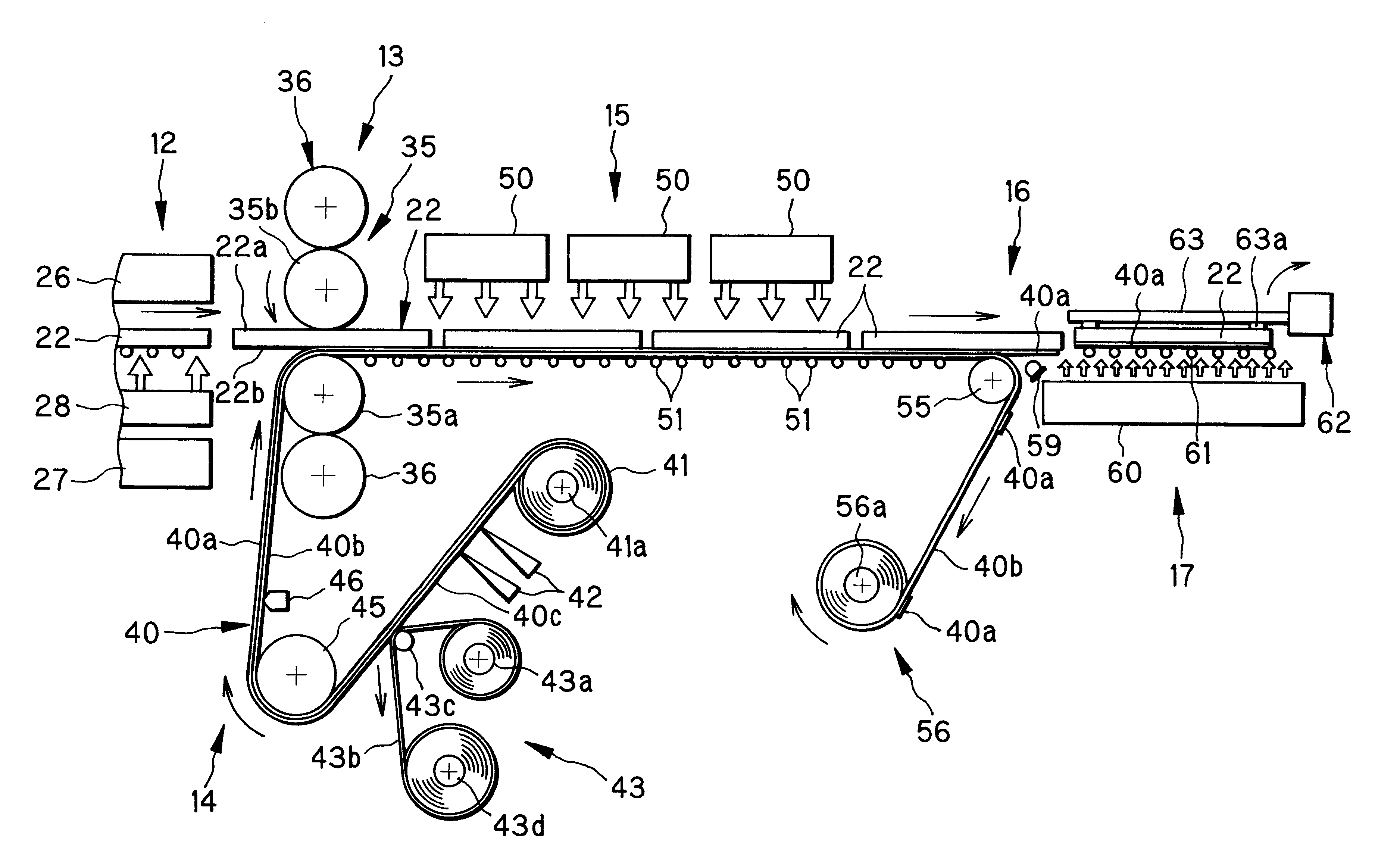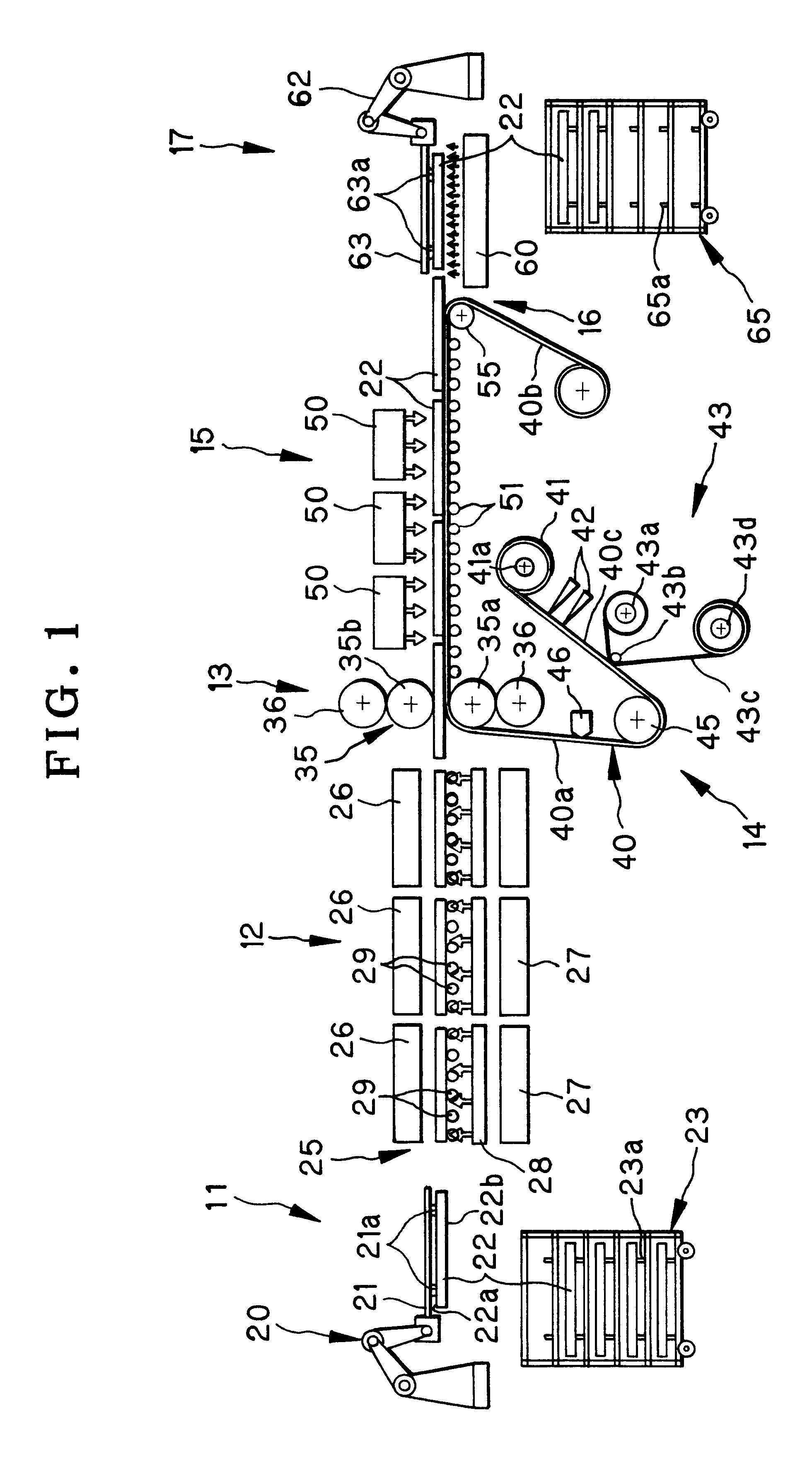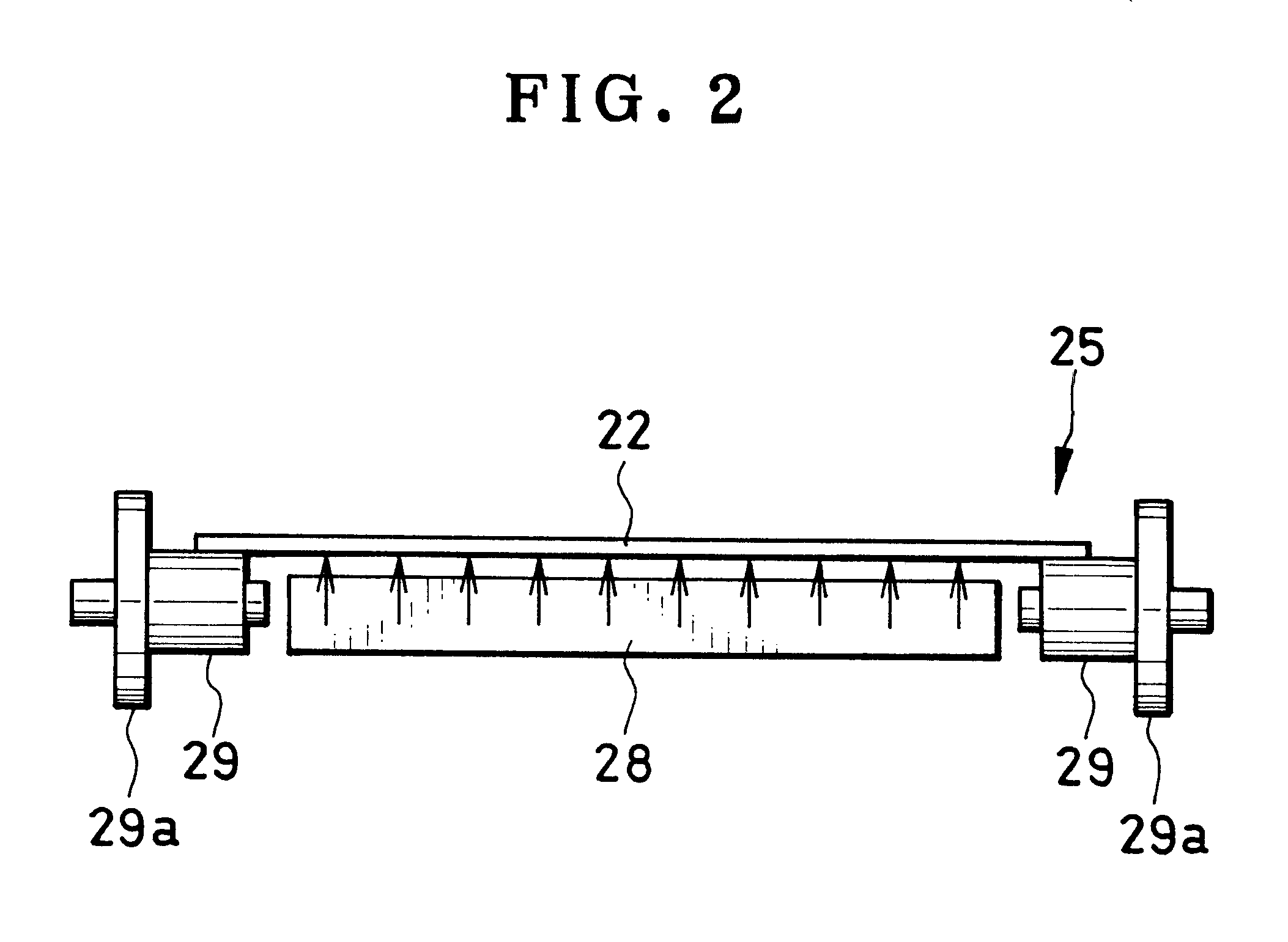Laminator and laminating method for lamination to substrate
a technology of lamination and substrate, applied in the direction of diffusion transfer process, thermography, instruments, etc., can solve the problems of increasing the running cost of production, and reducing the efficiency of production
- Summary
- Abstract
- Description
- Claims
- Application Information
AI Technical Summary
Benefits of technology
Problems solved by technology
Method used
Image
Examples
Embodiment Construction
In FIG. 1, a laminator of the present invention is depicted. The laminator or a layer transferring device includes a supply transfer mechanism 11, a preheater 12, an attacher unit 13, a laminated material supply unit 14, a cooler 15 having a cooling fan or blower, a peeler 16, and an ejector 17.
The supply transfer mechanism 11 includes a supply robot hand 20 of an articulated robot type. A hand body 21 of the supply robot hand 20 includes suction pads 21a. A glass substrate 22 has a back surface 22a, which is sucked or retained by the suction pads 21a, which keep the glass substrate 22 captured on the hand body 21. The glass substrate 22 also has a transfer receiving surface 22b which is reverse to the back surface 22a. A supply cassette 23 stores the glass substrate 22. The supply robot hand 20 takes the glass substrate 22 out of the supply cassette 23, and turns the glass substrate 22 by half a rotation to direct the transfer receiving surface 22b downwards, before the supply robo...
PUM
| Property | Measurement | Unit |
|---|---|---|
| temperature | aaaaa | aaaaa |
| temperature | aaaaa | aaaaa |
| temperature | aaaaa | aaaaa |
Abstract
Description
Claims
Application Information
 Login to View More
Login to View More - R&D
- Intellectual Property
- Life Sciences
- Materials
- Tech Scout
- Unparalleled Data Quality
- Higher Quality Content
- 60% Fewer Hallucinations
Browse by: Latest US Patents, China's latest patents, Technical Efficacy Thesaurus, Application Domain, Technology Topic, Popular Technical Reports.
© 2025 PatSnap. All rights reserved.Legal|Privacy policy|Modern Slavery Act Transparency Statement|Sitemap|About US| Contact US: help@patsnap.com



